Tibet Climate: What is the Climate on Tibet Plateau
The climate in Tibet belongs to the typical high-altitude plateau climate. Climates are much different in different areas in Tibet and temperatures vary greatly within a single day.
The climate in southeastern Tibet (e.g. Nyingchi) is gentle and temperate, with an average temperature of eight degrees; in western Tibet (e.g. Nagqu), the average temperature is below zero degrees; while in Lhasa and the central part of Tibet, the climate is normal and nice for traveling.
Visitors would feel neither cold in winter nor hot in summer, especially from April to October, the best seasons to visit Tibet. Most of the annual rainfall comes in the rainy season that starts from May to September, when the precipitation covers 90 percent of the total annual rainfall. Usually it rains at night in Lhasa, Shigatse and Chamdo area, and the precipitation gradually decreases from 5000 millimeters in the lower part of the southeast to just 50 millimeters in the northwest.
The following is the detailed weather and climate information of the major attractions in Tibet, which may help you to know more about the weather and what to wear for your Tibet tour.
CONTENT
Tibet Weather Condition by Region
Climate of Lhasa
At its elevation of 3,656 meters, Lhasa is one of the highest cities in the world, yet has over 3,000 hours of sunshine every year. Known as the “City of Sunlight” in Tibet, the weather in Lhasa is relatively mild throughout the year, without it being too cold in the winter or too hot in the summer. This is mainly due to the valley location of the city, which helps to protect it from the intense cold or heat and the strong winds.
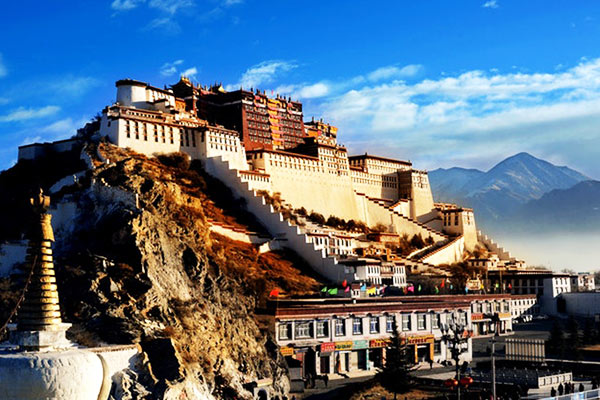 It is not too cold in the winter or too hot in the summer as for Lhasa city.
It is not too cold in the winter or too hot in the summer as for Lhasa city.Lhasa’s climate can be divided into two main seasons, wet and dry, and the wet season is mainly from June to September. July and August are the main months for rain, with an average rainfall of around 130 millimeters a month. Temperatures average between 20 and 24 with temperatures from May to July reaching as high as 30 degrees. However, the temperature difference between day and night can be drastic. Average temperatures can drop to around 10-11 degrees, and have been known to reach as low as two degrees.
The winter in Lhasa is mild and dry, and temperatures range from 16-17 degrees in April and October, to as low as eight degrees in January. However, the nighttime drop in temperature is equally as large, with temperatures dropping to as low as minus 7 degrees in December and January.
Climate of Shigatse
At 3,800 meters above sea level, Shigatse is only a little higher in altitude than Lhasa, but has a much harsher climate than the Tibetan capital. Shigatse has a semi-arid plateau climate, with a temperate monsoon that gives it higher summer temperatures and lower winter temperatures.
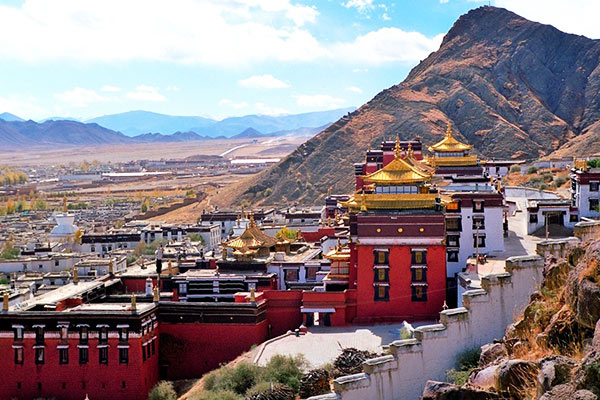 Shigatse has a much harsher climate than Lhasa.
Shigatse has a much harsher climate than Lhasa.Summer temperatures of Shigatse range from 18-22 degrees during the day, but drop to an average of between 5 and 7 degrees at night. The winter temperatures are similarly harsher than in Lhasa, reaching only around 5-6 degrees in December and January, and dropping as low as minus 13 degrees at night.
May to October is the best time to visit, as the temperatures are warmer on average, and the nights are not yet too cold, with the hottest months being in June and July. Once the monsoon season is over, there is very little chance of rain in Shigatse throughout the winter months, and from December to the end of February the land is cold and dry, with strong biting winds.
Climate of Mount Everest Area in Tibet
Far out in the west of Tibet lies the region around the famous Mount Everest, the highest mountain in the world. At its summit, the temperature never gets above minus 2 degrees in summer, and can be as low as minus 60 degrees in the depths of winter. Lower down, at the famous Everest Base Camp (EBC), the temperatures are more normal, though much colder than in Lhasa and Shigatse.
Even at the altitude of EBC (5,200 meters), the climate of Mount Everest Area is that of a typical plateau monsoon climate, with both wet and dry seasons. The wet season at EBC is from June to September, and is influenced by the Indian monsoon, bringing frequent rainfall and many cloudy days. Despite the monsoon starting in June, there is not that much rain yet, and it is not until July and August that the heavier rains fall, with around 130 millimeters on average over the two months.
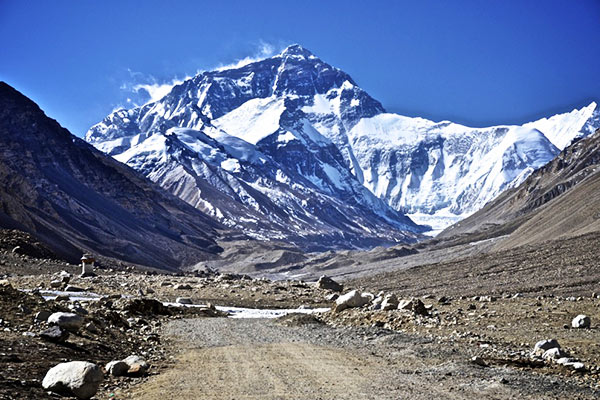 Everest Base Camp has a typical plateau monsoon climate, with both wet and dry seasons.
Everest Base Camp has a typical plateau monsoon climate, with both wet and dry seasons.While winter is normally dry, almost every month sees some rain, if only a few millimeters at most. The temperature differential from day to night is also high at EBC, with winter temperatures dropping to as low as minus 28 degrees in the coldest months, and not really getting above freezing until July and August again.
One of the best times to visit Everest Base Camp in Tibet is spring, from April to May, as the colder weather is now over, and the rainy season has not yet started. The skies are normally clear, and while it may be windy, the temperatures are warm enough to be comfortable. April and May are also the optimum time for climbing the world’s tallest mountain, and there are often expeditions at the base camps at this time of year.
There is also a small period in autumn, in September and October, where there is a good chance of favorable conditions, as the rainy season has passed and the clouds have moved on.
Climate of Mount Kailash and Lake Manasarovar
Another famous mountain set out in the west of Tibet, in Ngari Prefecture, is the sacred mountain of four religions known as Sacred Mount Kailash. Often visited as a twin stop with Lake Manasarovar, one of the Great Three Holy Lakes of Tibet, there is a defined period when it is best to take a Mount Kailash tour.
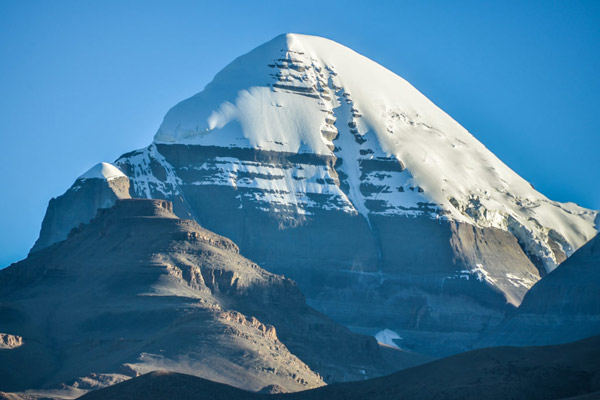 Spring and autumn are ideal times to take a Mount Kailash tour.
Spring and autumn are ideal times to take a Mount Kailash tour.Winter is definitely out for traveling to Ngari Prefecture, the weather is always inclement, and roads can often be blocked by snowfall. Similarly, as the mountain is set farther into Tibet than Everest, the rainy season brings more rains that can make traveling around the kora route very dangerous.
The best time to visit Mount Kailash and Lake Manasarovar is spring and autumn, from April to June and September through October. While it is not as warm as summer, it is warm enough to be comfortable, although the temperatures can drop drastically at night.
Climate of Nyingchi in Eastern Tibet
Famous for the peach blossoms that bloom on the thousands of trees across the prefecture every April, Nyingchi is one of the lowest places on the Tibetan plateau, with an average elevation of around 3,000 meters.
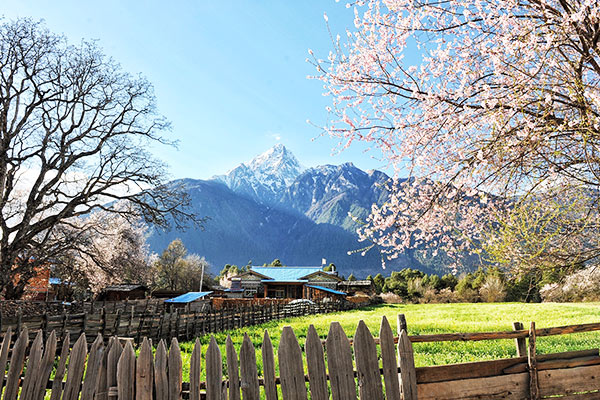 The climate in Nyingchi is warm and temperate except those mountain peaks.
The climate in Nyingchi is warm and temperate except those mountain peaks.The climate across Nyingchi is classified as warm and temperate, though the same cannot always be said of the mountain peaks. Rainfall is abundant in the area, and the climate is comfortable, even for those from hot countries. However, there is actually a very varied climate in Nyingchi, due to the massive vertical ranges from 800 meters to over 4,700 meters. This coexistent climate includes tropical climate, subtropical, temperate, boreal, humid, and semi-humid climates as one goes from low to high elevations.
Nyingchi sees around 650 millimeters of rainfall a year, with the bulk of it during the monsoon season from June to September. The monsoon rains make up for around 90 percent of the area’s annual precipitation. From November to March, which is the dry season, there is very little rain, and the area sees the most sunshine for the year. However, there is rarely ever a month in which it does not rain at all, thanks to the lower altitude.
Temperatures in Nyingchi range from daytime highs of 22 degrees in July and August to the coldest month, January, when it is usually a balmy 8 degrees. There is that same day/night differential that comes with higher altitudes, and the drop in temperature at night happens just as anywhere else in Tibet, with summer lows of around 10-11 degrees. Even in the coldest months, from December to February, the temperatures at night only get to between minus two and minus five degrees.
Spring is one of the best times to visit Nyingchi, from March to early May, when the weather is warm and pleasant, and it is also the time when the stunning beauty of the peach blossoms filling the valleys and mountainsides with delightful pink and peach colored flowers. One of the major highlights of any trip to Nyingchi is the annual Peach Blossom Festival, which occurs in late March and throughout April, and is one of the most popular festivals in the Tibet. With dozens of places in which to see and photograph the beautiful blossoms, there is no doubt that spring is the best time to be there.
Autumn is also a prime time to visit, as the leaves are turning brown and the weather is warm and clear. As the trees shed their summer leaves, the ground is covered with a blanket of color, which contrasts the snow-capped mountains and green pine forests.
Climate of Tsedang in Central Tibet
Lying just 60 kilometers to the southeast of Lhasa, Tsedang enjoys a very mild climate in a vast and fertile land. At 3,100 meters above sea level, Tsedang has mild wet summers and dry mild winters. Temperatures remain relatively moderate throughout the year, thanks to the humid winds that drive into the edge of the Tibetan plateau from the Indian Ocean.
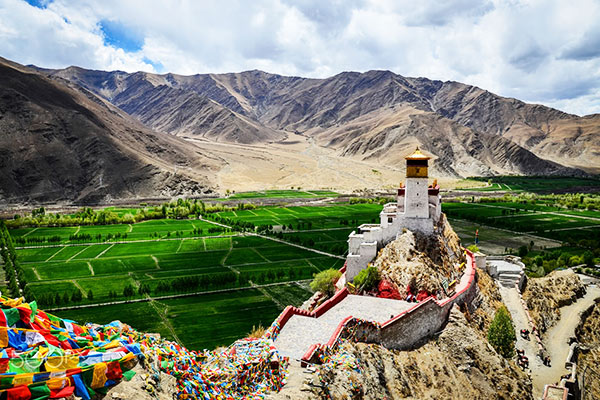 Tsedang has mild wet summers and dry mild winters.
Tsedang has mild wet summers and dry mild winters.Summer is warm and pleasant though with more rain than occurs further north in Lhasa and Shigatse, with the highest rainfall in the month of July. From November to March, there is very little rain at all, and the air is dry and chilly.
Temperatures in Tsedang can be warmer than that of Lhasa, with summer highs of around 23 degrees during the day, and only dropping to around 9-10 degrees at night. From November until early March, the temperatures reach highs of around 8-10 degrees during the day, with minus 8-9 degree temperatures at night. Conversely, it is the winter months from December and January that get the most sunshine, with between 24 and 26 sunny days a month.
Best Time to Visit Tibet
The best time to visit Tibet largely depends on what you want to see and where you wish to travel within the region. The diverse geography of the plateau and the varied weather patterns mean that certain areas of Tibet are better visited at different times of the year, and knowing when it is best to visit an individual area is a better idea.
The peak season for Tibet tourism is normally from April to October, while the low season runs from November to January, with a closure of the region to foreign tourists during February and March. You can take a Tibet tour all year round, and where you want to go usually defines the best time to visit.
Best Time for a Sightseeing Tour in Tibet
For many people, summer is the best time to go to Tibet for sightseeing tours. The warmer weather and brighter days mean that the weather is ideal for touring around the sights of the capital and the outlying areas, visiting monasteries and Dzongs, and learning more about the unique architecture and people of this high-altitude region.
Best Time to for Trekking in Tibet
For Tibet trekking tours, the best time to travel is from September to the end of October, with April to the end of May coming in as a close second. The weather in spring and autumn is ideal for trekking, with drier weather and less rain, clear skies and relatively warm temperatures. These two seasons make trekking in Tibet an absolute delight, and there is no better time to take the trek to Mount Everest or trek the kora route around Mount Kailash.
Best Time for Taking a Train to Tibet
If you are planning to take a train to Tibet, the best time for you is the season you prefer, as each season has a different view from the train.
The only suggestion is that it is hard to get a Tibet train ticket in summer holiday, especially from July to August, and from late September to early October, when it is the peak season for domestic tourists traveling to Tibet.
If you can only arrange a Tibet train tour during this period, it is highly suggested to make your reservation as early as possible, or you will not get your train ticket.
Best Time for an Overland Journey to Tibet
While there are few times when you cannot travel to Tibet, when traveling overland to Tibet, it is best to make the trip along the highways in spring and autumn, from April to May and September to November. The summer months, from June to August, are often too wet to make this trip, and in winter, from December to March, it is too cold, with high passes often being blocked by snow.
Monthly Tibet Weather Guide
The following are the monthly temperature and weather condition of the major destinations in Tibet. You can check the average temperature of each place in your preferred travel month and have a general idea of what to wear according to the temperature.
January in Tibet
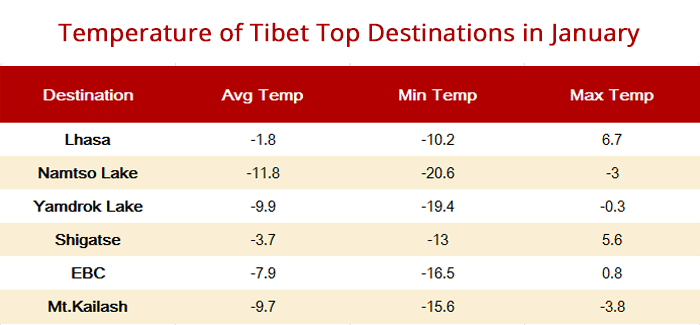
January in Tibet is one of the coldest months of the year, where temperatures across the region drop to well below freezing at night. Lake Namtso, on the border of Lhasa and Nagqu, is the coldest location, on average, with an average temperature below -11 degrees and daytime temperatures that remain below freezing throughout the month.
February in Tibet
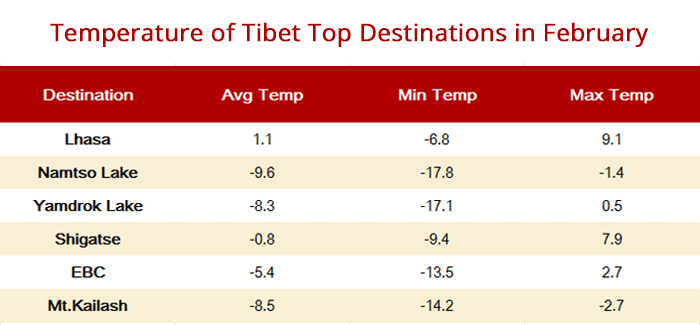
February sees the temperatures in many places warming up a little, as the icy grip of winter begins to let go. In the Tibetan capital, it rises above freezing in time for the Tibetan New Year celebrations.
March in Tibet
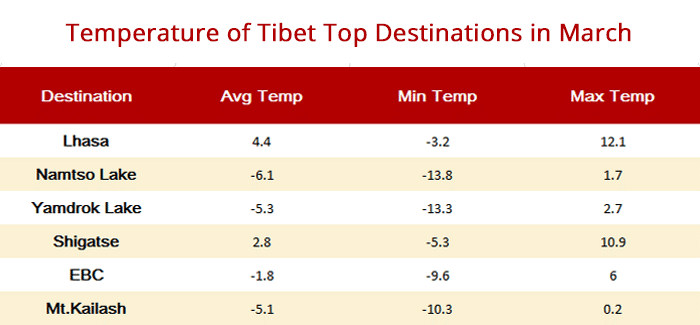
March may be the “official” start of spring, but temperatures do not rise much yet. Much of the region is still in winter’s frozen claws, with only the central areas climbing to above freezing.
April in Tibet
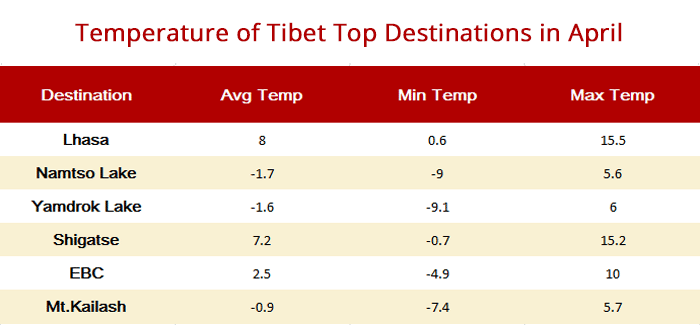
As April rolls around, the temperatures really start to rise, and the tourism seasons begin in earnest. Temperatures in the capital average around eight degrees, and even at Lake Namtso, it is starting to warm up and melt the frozen lake at last.
May in Tibet
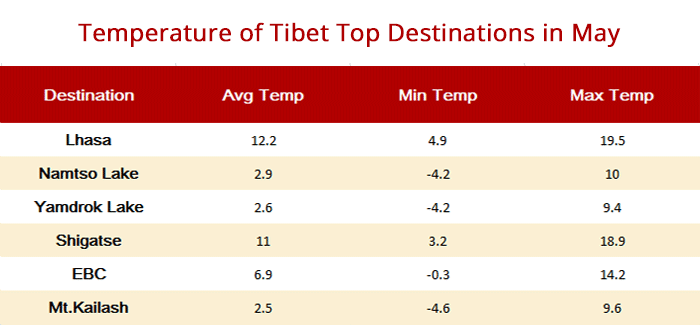
May is the start of the warmer weather, with most places seeing average temperatures of between 3 and 13 degrees. Lhasa sees a lot more sunshine in May, and it is an ideal time to trek around the Mount Kailash Kora.
June in Tibet
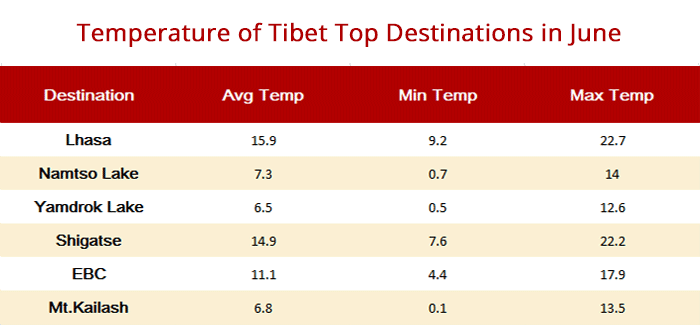
As June rolls in, the weather starts to see some more rain across the plateau, though this is still just beginning. One of the hottest months of the year, temperatures in Lhasa are hitting the low 20 degrees, and even at Everest Base Camp, the weather is warm and pleasant.
July in Tibet
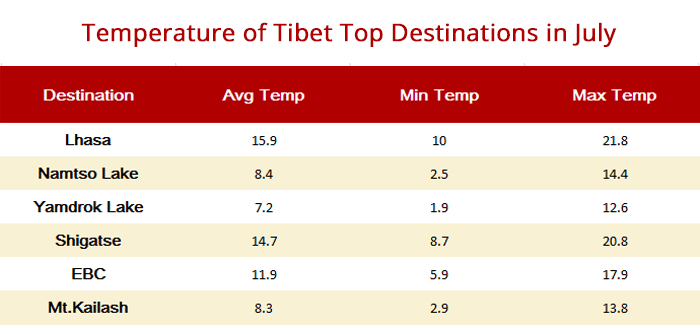
July sees more of the monsoon rains across the region, and is one of the wettest months of the year. Areas such as Mount Kailash and Mount Everest barely see much rain, and with temperatures hitting as high as 13-17 degrees, it is a beautiful time of year.
August in Tibet
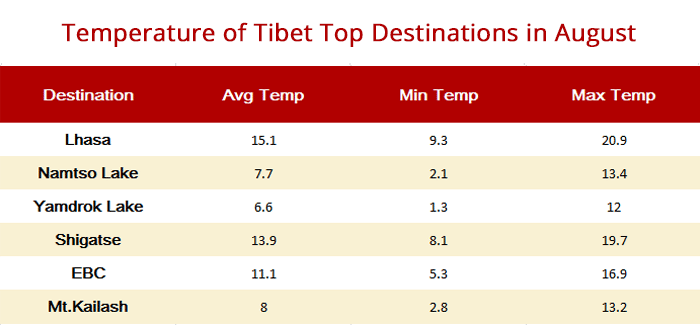
The last of the real rainy months on the plateau, August starts to see a slight drop in temperatures, as the warmer period has ended and the cooler weather is threatening to head in. Some places are still very wet, but it is still warm enough to be comfortably pleasant.
September in Tibet
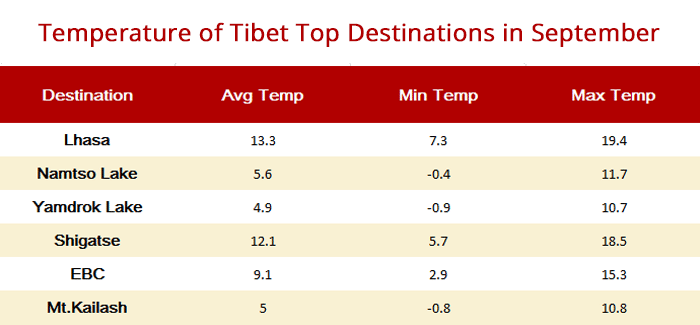
September is the start of autumn on the plateau, and in many places the rains are almost over. Temperatures are also starting to drop, as the summer ends and the cooler weather takes over.
October in Tibet
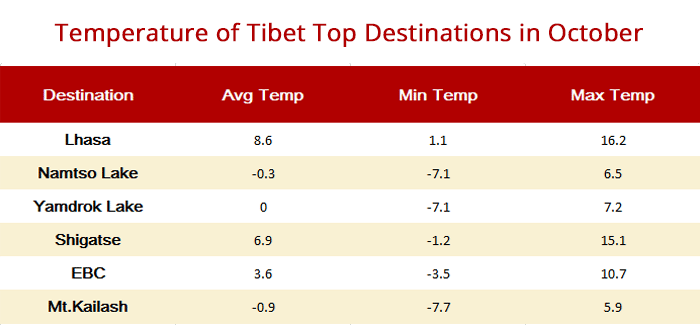
The best month to go trekking in Tibet, October is the perfect time to take the treks to EBC and around Mount Kailash, and an ideal time to visit Lake Namtso. As the leaves turn brown and fall to the ground, the region becomes a multi-colored wonderland.
November in Tibet
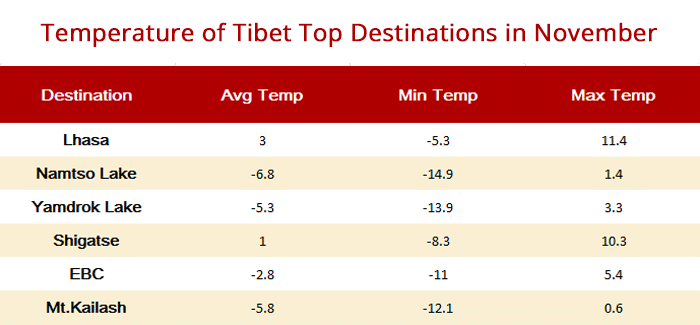
The last of the times for trekking in the outlying areas of Tibet, November sees a larger drop in temperatures, with some areas already dropping to below freezing. Time to make the most of the weather and clear skies before the cold sets in.
December in Tibet
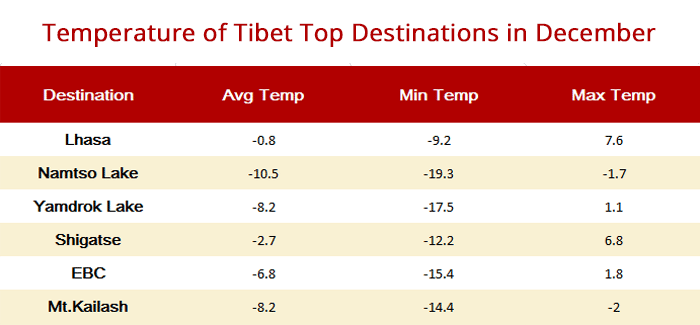
As the year ends, temperatures are still dropping, and before the end of December, most places will experience average temperatures below freezing. However, it is still possible to visit Mount Everest, which is even more amazing with a little snow on the ground.
Conclusion
Throughout the year, Tibet is an amazing place to visit, with plenty to do and see in every single month. While you may not be able to trek in Ngari in January, you are able to do so in Lhasa and Nyingchi, where the weather is milder. Similarly, when it is too wet in Nyingchi and Lhoka, it is much drier in the west, around Shigatse and Mount Everest, allowing you to travel to many places even at the height of the monsoon season.
When to come is entirely up to you, and the best time for any trip to Tibet depends largely on what you want to see and where you want to go. But rest assured, you can visit any time you like.
To take you to the best of Tibet in the best time, we offer various kinds of Tibet group tours with frequent departure dated during the whole year. You can just pick up your favorite itinerary and choose the date you like.
Related Readings:
Recommended Tibet Small Group Packages
-
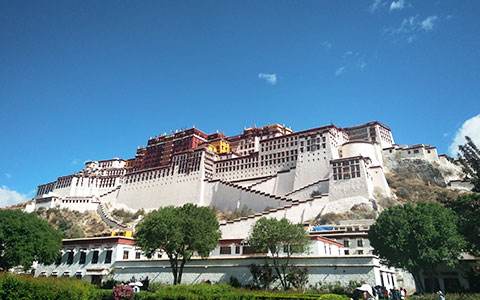 HOT
HOT -
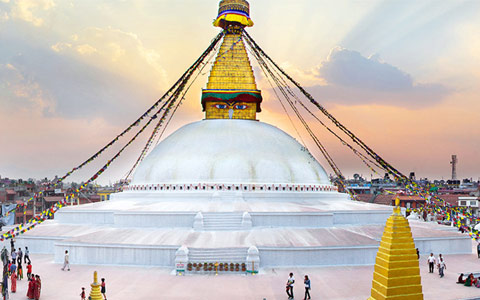 HOT7 Days Lhasa to Kathmandu Overland Small Group Tour
HOT7 Days Lhasa to Kathmandu Overland Small Group TourLhasa - Gyantse - Shigatse - Everest Base Camp - Kathmandu
Only From: USD989
View Details -
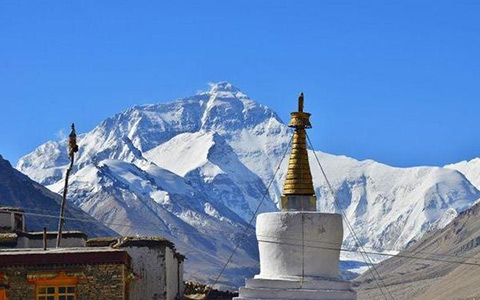 HOT8 Days Tibet Everest Small Group Tour
HOT8 Days Tibet Everest Small Group TourLhasa - Gyantse - Shigatse - Everest Base Camp – Lhasa
Only From: USD949
View Details -
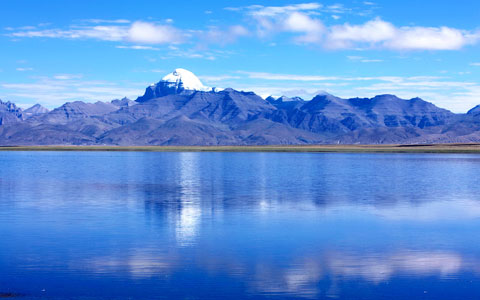 HOT15 Days Tibet and Mount Kailash Small Group Tour
HOT15 Days Tibet and Mount Kailash Small Group TourLhasa - Gyantse - Shigatse - Mt. Everest - Mt. Kailash - Lhasa
Only From: USD2069
View Details
 BACK
BACK
0 Comment ON "Tibet Climate: What is the Climate on Tibet Plateau"